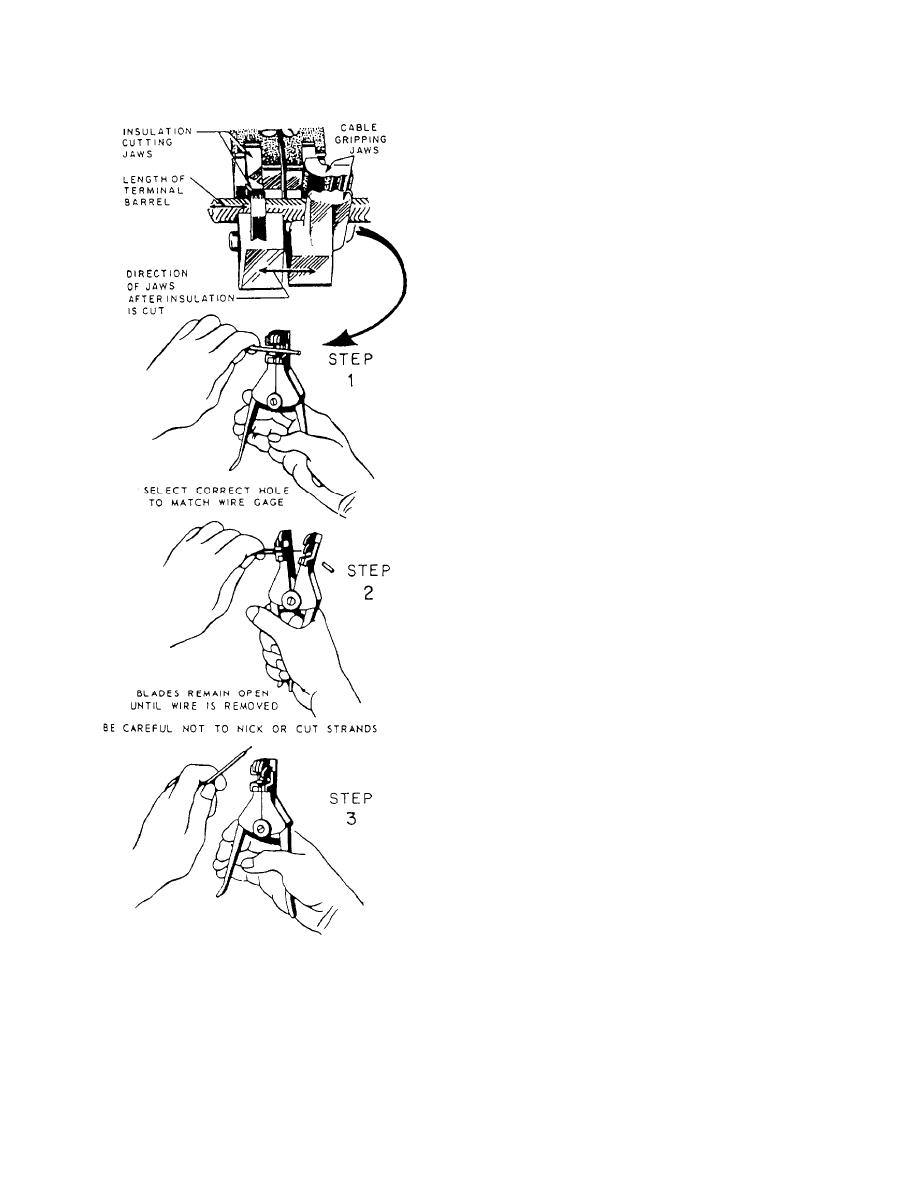 |
|||
|
Page Title:
Figure 2-55.--Stripping wire with a hand stripper. |
|
||
| ||||||||||
|
|
 a length equal to the length of the terminal barrel, clean
the individual strands thoroughly and twist them
tightly together. Solder them to form a neat, solid
terminal for fitting either approved clamp-type lugs or
solder-type terminals. If the solder-type terminal is
used, tin the terminal barrel and clamp it tightly over
the prepared conductor (before soldering) to provide
a solid mechanical joint. Conductor ends need not be
soldered for use with solderless-type terminals applied
with a crimping tool. Do not use a side, or diagonal,
cutter for crimping solderless-type terminals. Refer to
NEETS, module 4, for the proper procedures for
soldering and crimping.
Solderless-type terminals may be used for all
lighting, power, interior communications, and fire
control applications. However, equipment provided
with solder-type terminals by the manufacturer and
wiring boxes or equipment in which electrical
clearances would be reduced below minimum
standards require solder-type terminals.
For connection under a screwhead where a
standard terminal is not practicable, you can use an
alternate method. Bare the conductor for the required
distance and thoroughly clean the strands. Then twist
the strands tightly together, bend them around a
mandrel to form a suitable size loop (or hook where
the screw is not removable), and dip the prepared end
into solder. Remove the end, shake off the excess
solder, and allow it to cool before connecting it.
After the wiring installation has been completed,
measure the insulation resistance of the wiring circuit
with a Megger or similar (0 to 100 megohm, 500 volts
dc) insulation resistance measuring instrument. Do
not energize a newly installed, repaired, or modified
wiring circuit without first ascertaining (by insulation
tests) that the circuit is free of short circuits and
grounds.
Lacing Conductors
Conductors within equipment must be kept in
place to present a neat appearance and to facilitate
tracing of the conductors when alterations or repairs
are required. When conductors are properly laced,
they support each other and form a neat, single cable.
Use a narrow flat tape wherever possible for lacing
and tying. This tape is not an adhesive type of tape.
Round cord may also be used, but its use is not
preferred because cord has a tendency to cut into wire
insulation. Use cotton, linen, nylon, or glass fiber cord
or tape, according to the temperature requirements.
2-49
|
|
Privacy Statement - Press Release - Copyright Information. - Contact Us |